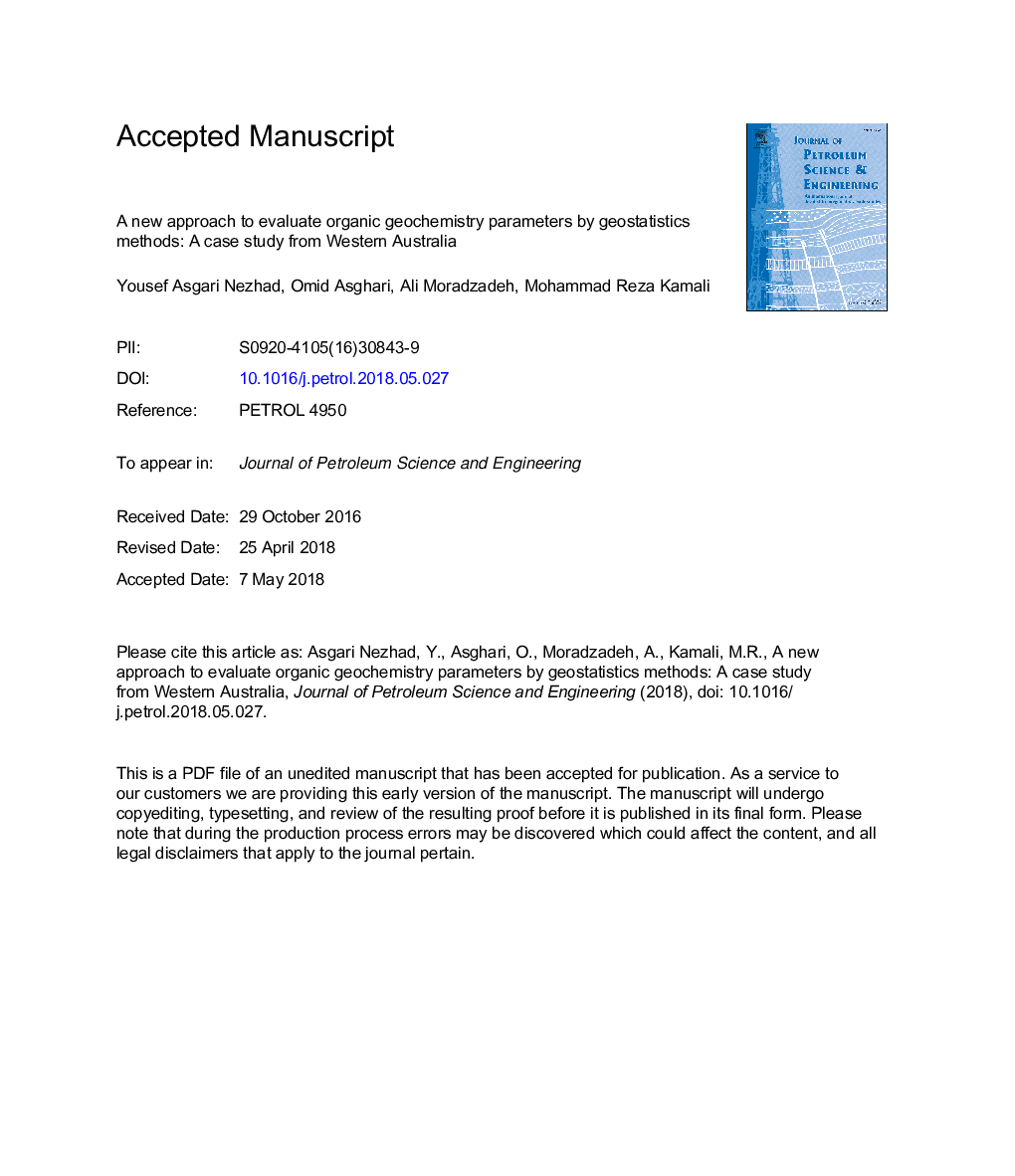| Article ID | Journal | Published Year | Pages | File Type |
|---|---|---|---|---|
| 8124627 | Journal of Petroleum Science and Engineering | 2018 | 25 Pages |
Abstract
Organic geochemical data are essential for unconventional shale resources evaluation. However, these data are often measured using sets of expensive and time-consuming geochemical experiments on few cuttings or core samples. Indirect methods, such as petrophysical approach, can provide a fast, convenient and cost effective means for their estimation using well log data. Among them, ÎLogR is a popular method for hydrocarbon source rock assessment. As it is based on a simple relation between logs and TOC, it cannot resolve other organic geochemical parameters. In this study, two methods base on machine learning techniques and on geostatistics, were used to estimate one dimensionally the organic geochemical parameters in one well of the Canning basin, Western Australia. For estimation using the artificial neural network (ANN); petrophysical logs were used as inputs and S1, S2, S3, TOC data of geochemical analysis taken as outputs of the models. The well-derived geochemical data were simulated by Sequential Gaussian Simulation (SGS) method. The obtained results demonstrate that the real and estimated data of the MLP-NN model have an acceptable mean squares error. In addition, all standard SGS diagrams show its superiority to the ANN for producing more similar results to the raw data. These results indicate the ability of these methods for estimation of the required geochemical parameters.
Related Topics
Physical Sciences and Engineering
Earth and Planetary Sciences
Economic Geology
Authors
Yousef Asgari Nezhad, Ali Moradzadeh, Mohammad Reza Kamali,
